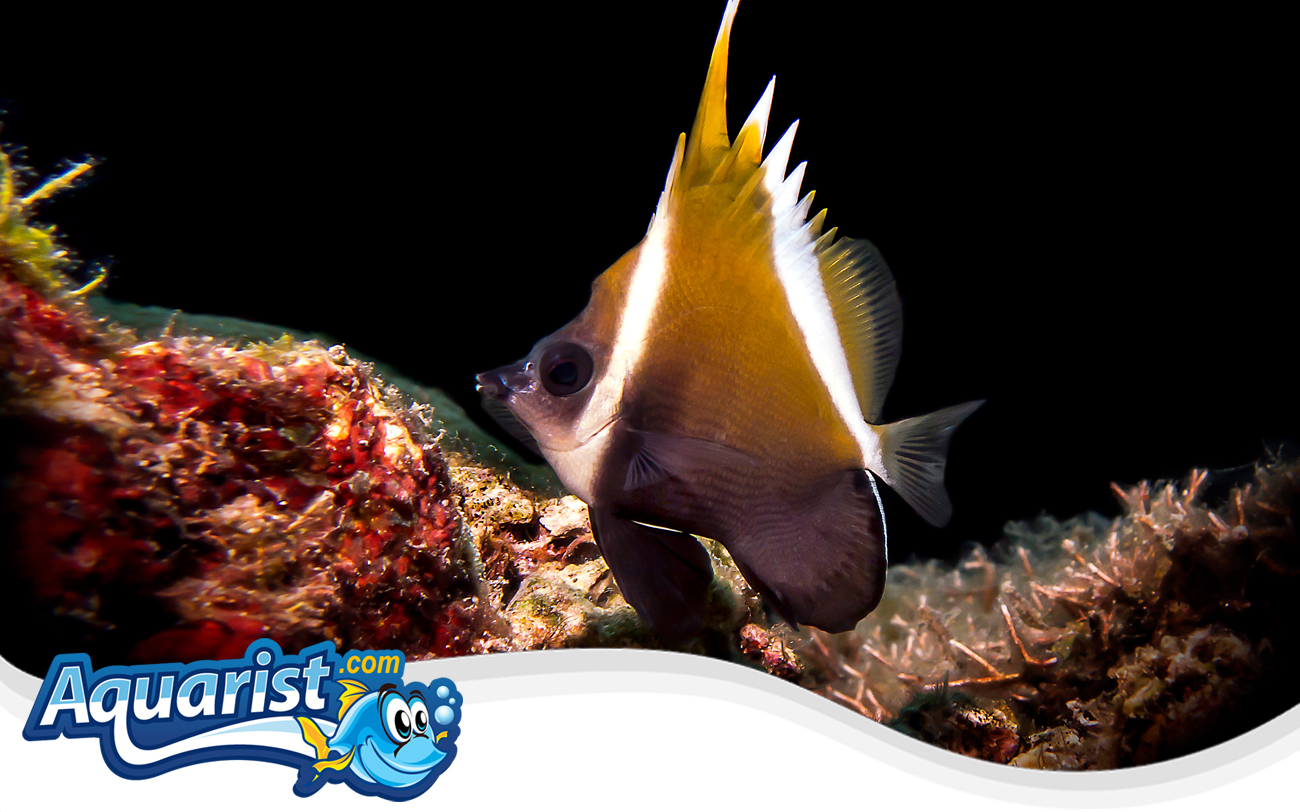Overview
- Native to the Indo-Pacific region, commonly found in reef slopes, coastal lagoons, and coral-rich areas.
- Recognized for its distinct black-and-white body coloration, with a yellow dorsal fin and a "horned" ridge above the eyes.
- Unlike some other Heniochus species, it is often found solitary or in pairs rather than in large schools.
- Prefers reefs with strong water movement, allowing it to forage efficiently for plankton and small organisms.
- A relatively hardy species that adapts well to well-maintained aquarium settings.
Feeding
- Omnivorous, primarily consuming plankton, small invertebrates, and occasionally soft coral polyps.
- Readily accepts a range of prepared foods, including high-quality flakes, pellets, and frozen shrimp.
- Supplementing with marine algae and spirulina supports its immune system and vibrant coloration.
- Requires frequent small feedings throughout the day to sustain its active metabolism.
- Exhibits natural foraging behavior, frequently picking at rock surfaces and algae.
Habitat
- Typically found in coral reef slopes, rocky reef structures, and areas with moderate to strong currents.
- Requires an aquarium with open swimming space, live rock for shelter, and stable water parameters.
- Best suited for aquariums with high-quality filtration to support its active nature.
- A minimum tank size of 125 gallons is recommended due to its need for free movement.
- May nibble on soft corals or sessile invertebrates, making it a semi-reef-safe species.
Fish Care
- Optimal water temperature: 74-80°F (23-27°C).
- Ideal pH range: 8.1-8.4, with a specific gravity of 1.023-1.026.
- Moderately hardy but requires stable conditions and consistent maintenance.
- Best suited for peaceful community setups with non-aggressive fish.
- Regular water changes and a diverse diet contribute to its longevity and overall health.
Compatibility
- Generally peaceful and does well in community aquariums with non-aggressive species.
- Best kept singly or in pairs, as it does not typically form large groups.
- Compatible with tangs, gobies, wrasses, and other reef-safe fish.
- May pick at soft corals or small invertebrates, so caution is advised in reef tanks.
- Should not be housed with overly aggressive species that could stress or outcompete it for food.
Aquarium Behavior
- Highly active swimmer, often patrolling the mid-to-upper water column.
- Forms strong bonds with tank mates and interacts with its surroundings.
- Frequently picks at live rock and substrate in search of food.
- Can be initially shy but quickly adapts to its environment with time.
- Thrives in a well-maintained aquarium with proper space, high water quality, and a balanced diet.


